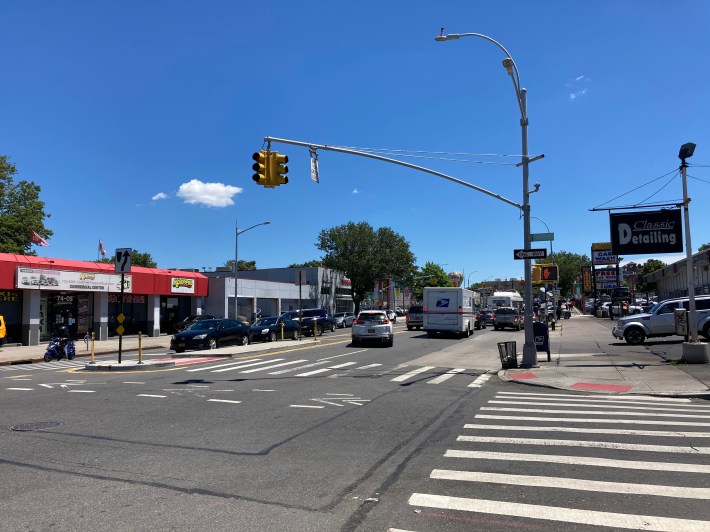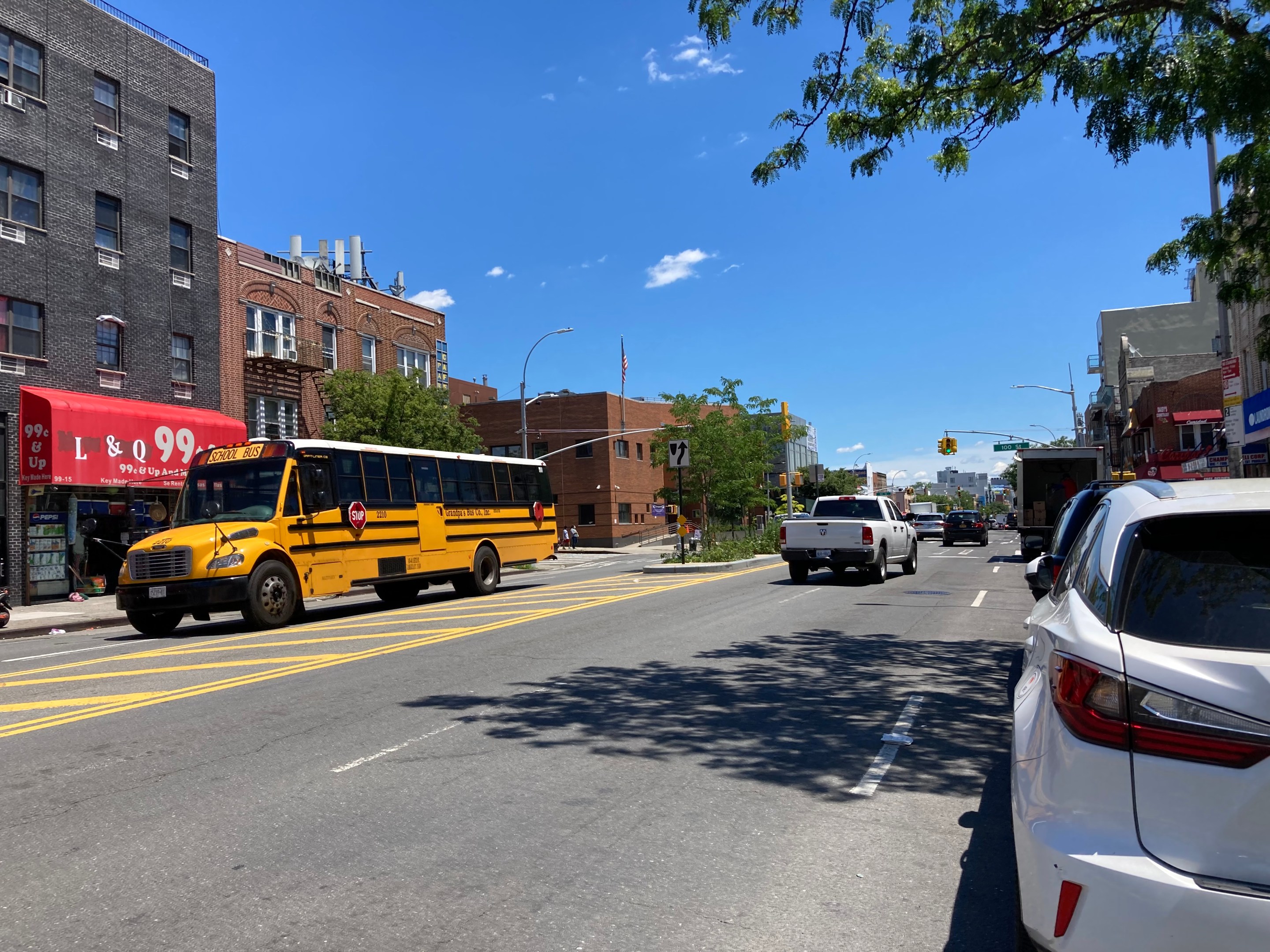The city's plan to tame a notoriously deadly Queens roadway does not go far enough, advocates say.
The Department of Transportation unveiled a $79-million redesign for 2.7 miles of Northern Boulevard between Broadway and 114th Street this month that includes upgrades such as consolidated bus stops, curb extensions, and a planted median. Yet it fails to address the root of the issues on the so-called “New Boulevard of Death": too many cars blocking the buses of long-suffering transit users.
“We have waited a very, very long time. It doesn’t go far enough," said Jim Burke, the former chairman of the Fix Northern Boulevard campaign, after the DOT's presentation to Queens Community Board 3 earlier this month. Burke took issue with the project's lack of dedicated bus lanes, and the lack of enforcement against the illegally parked cars that slow down buses — especially between Junction Boulevard and 90th Street. Especially egregious is a lack of any plan to reduce speeding on a road where seven people have died since 2014, including 9-year-old Giovanni Ampuero and 47-year-old Carlos Gavilanes, both in 2018.
"Our concern has always been safety near all the schools, and for people. ... These designs simply do not address that primary focus," he said. "Northern Boulevard didn't need fewer [bus] stops; it needs fewer cars. That should be a busway, I can’t believe they didn't do that. And still the biggest issue is enforcement."
Northern Boulevard is a 70-foot roadway with two travel lanes in each direction, on which some 1,500 vehicles per hour travel during peak times. It's lined with schools, commercial businesses, and car dealerships that double-park and park on the sidewalk — an untamed, dangerous mess that's contributed to the seven pedestrian deaths, as well as 173 pedestrian injuries, 84 cyclist injuries, and 654 motorist injuries from 3,123 reported crashes over the same period, according to Crash Mapper. (That's more than one crash every day on a single roadway.)

For years, activists have been fighting for a car-free busway on Northern Boulevard. The congested roadway, which also carries bus lines including the beleaguered Q66, slows down straphangers — many of whom are low-income essential workers.
“It’s a great route, but the Q66 is a nightmare with the traffic,” Burke told Streetsblog in 2019. “It’s nearly impossible to get on one of these buses during the morning rush hour, where passenger cars, city vehicles, and private transportation companies idle and double park, slowing the Q66 to a crawl.”
Advocates have been agitating for street safety in the car-centric neighborhood since 2018, when DOT first started convening workshops to solicit residents' input on much-needed changes. Streetsblog reported at the time that a final plan for the dangerous roadway could include play streets and greenery to create greater walkability and more safety for pedestrians, even if that came at the expense of drivers.
I’m thrilled everybody is on board #FixNorthernBlvd @DiaNoorQ &I were co-chairs of @TransAlt Qns #FixNorthernBlvd campaign&we put together WISH list after numerous community consultations.I’m sure new co-chairs @MakeQueensSafer @NualaFor34 will update! Thank you all-let’s fix it! https://t.co/pbPLy8yPUJ pic.twitter.com/WNELwiT6yL
— JimRockaway (@JimRockaway) January 28, 2020
But three years later, DOT's plan doesn't ask for any concessions from drivers. Instead of a busway, or even a dedicated bus lane, the plan seeks only to reduce the number of bus stops to facilitate faster service. The capital project includes a raised, planted median to provide pedestrian refuge, and concrete curb extensions that DOT says will shorten crossing distances for passengers and pedestrians.
This is very disappointing. Tons of transit advocates/community activists have been pushing for a Northern Boulevard busway, and yet the DOT's vision for a Capital Project doesn't even have bus lanes-just bus bulbs. @2AvSagas @capntransit @Straphangers @miatkowski /1 pic.twitter.com/yUo7bUMO15
— Union Tpke (@Union_Tpke) June 20, 2021
In addition to the forthcoming multimillion dollar plan that advocates say doesn't go far enough, last year, DOT installed five concrete pedestrian-safety islands between 71st and 112th streets and a temporary protected bike lane between 41st Avenue in Long Island City and Broadway in Woodside that it says it will make permanent. But the temporary protective measures along the Northern Boulevard bike lane — a key route for Queens cyclists to and from the Queensboro Bridge — disappeared after the flexible delineators were destroyed by the Department of Sanitation as it plowed the street for cars after a winter storm, making it even more dangerous for riders.
A spokesman for DOT said the much-maligned plan is "a step in an ongoing process to revitalize the corridor and make it safer for all users. This year’s design aims to increase bus speeds and create a footprint for future transit improvements."






